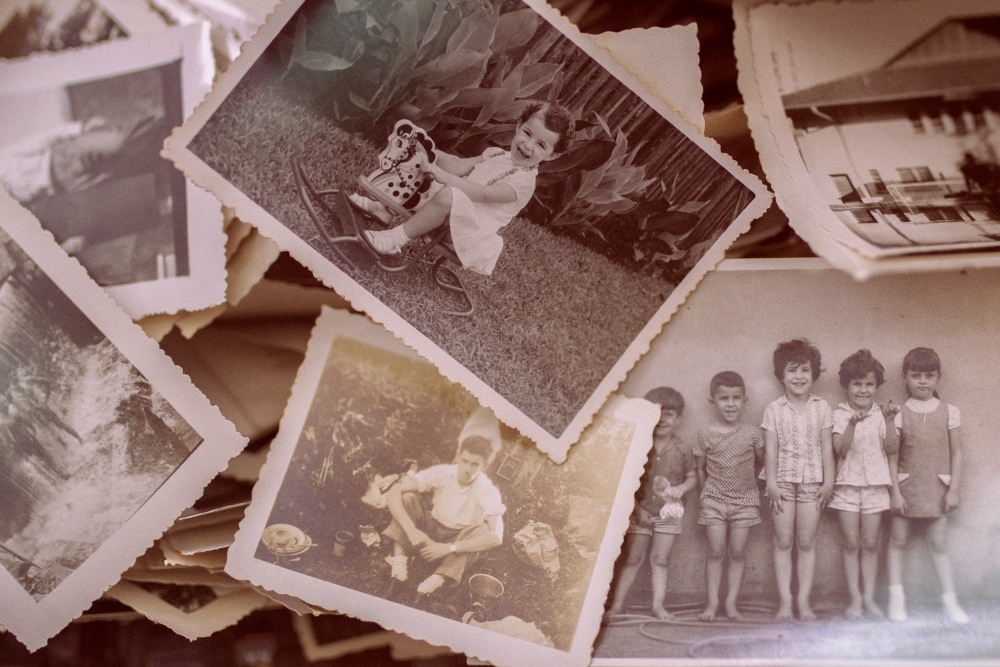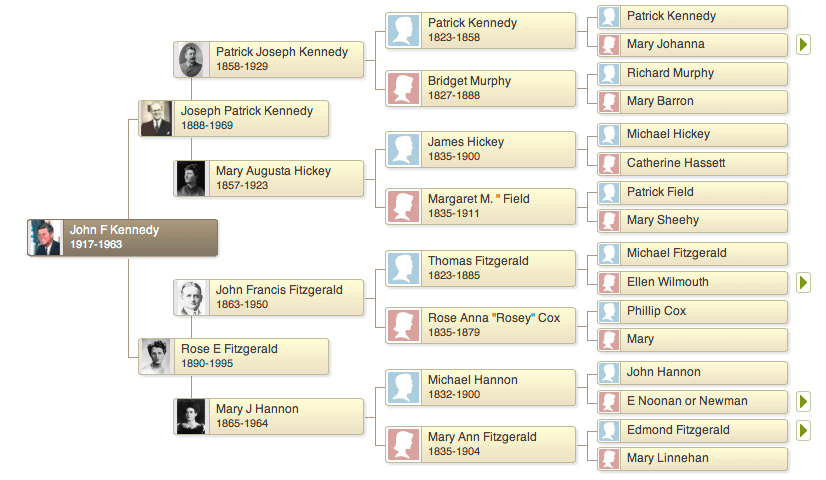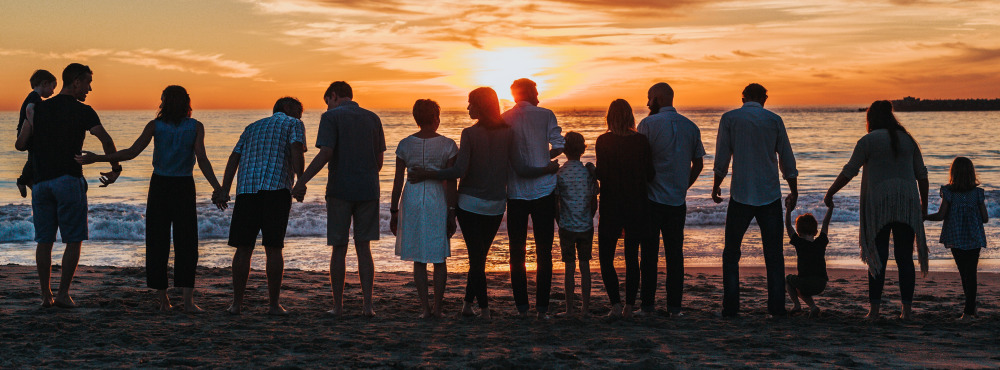MORE AND MORE COUSINS
 June 2, 2023
June 2, 2023
In an earlier post, I mentioned that with each generation, you are related to twice as many families. Understanding this can help you identify problems in your tree. You have two parents, four grandparents, eight grandparents, etc., etc. What does that mean for cousins? It means, with each generation you will see a huge increase in the number of cousins you have. If you've done a DNA test, you will likely see thousands of people on your match list. I've looked at people's lists that have over 100,000 DNA matches. You might be thinking, "How can I possibly be related to so many people?" You're actually related to a lot more people than that, remember, those are only the people who have submitted DNA to the same website you're looking at. To understand these large numbers, let's look at JFK's family tree again.

In his tree, we can see that there are only two families who he can get first cousins from: Patrick Kennedy and Mary Hickey, and John Fitzgerald and Mary Hannon. That means there's probably not going to be a whole lot of first cousins. Now let's go back another generation. Now we have four families to get cousins from because there are four sets of great-grandparents (those cousins would be called second cousins). Once again, your second cousins are people with two great grandparents in common with you. If we go back another generation, now we have eight sets of great-great grandparents to get cousins from (third cousins). As you can see, the number of cousins you have can build up really fast. The next generation has sixteen families, then thirty-two, etc.
So, how many cousins do you have? Can it be calculated? No, not exactly. It can only be estimated unless you actually look at each individual family and count the children, grandchildren, great-grandchildren, etc. There have been studies done to estimate the amount of cousins people have. Keep in mind, not only do the number of families increase with each generation, but the amount of children people had in the past was much greater as well. Some of my great-grandparents had a dozen children, but you rarely see large families like that today. I found a list on Wikipedia that takes these factors into account and estimates the number of cousins the average person has. Please note, these are estimates. Other charts may show different numbers. First cousins: 6 Second cousins: 28 Third cousins: 175 Fourth cousins: Over 1000. It is estimated that after 10 generations, you could have over one million cousins. This isn't true of everyone of course. Maybe you have great-grandparents who had only one child each. Instead of 28 second cousins, you would end up with only a few. Everyone's family is different, but as you go back further and further, there will be so many families you are related to, you will see huge numbers of cousins. This is because the number of families you're related to increases exponentially with each generation. Even if each family in your tree only had a couple children, you'd still eventually end up with an enormous amount of cousins.

Why should you care about all of this? Here's an example. While researching my wife's family, I noticed she has plenty of first and second cousins on her DNA match list. Everything made perfect sense. This made it very clear that her parents and grandparents were correct. She should have a lot more third cousins from families we recognize however. Her great-great grandparents had about eight to ten children each. They all had children, grandchildren and great-grandchildren. I counted forty living third cousins on her paternal grandfather's side alone, and that's not even including removed cousins. Each of those third cousins probably had children which could amount to one hundred third cousins once removed. Yet, none with the right family names were on her DNA match list. Instead, I am seeing a completely different family with third cousin DNA numbers.
In a future post, I'll talk about why these problems might occur and how your entire family lines may be different than you expected them to be. Later, we'll learn about centimorgan numbers. That will help you identify who's a first cousin, second cousin, third cousin, etc. Then you will really be able to analyze family trees and relationships. It's kind of amazing what the numbers can tell you. For example, if you had a DNA match of only 100cM, it can tell you where to look in the tree and how they should be related. I would know it's too weak of a number for them to have a grandparent in common with you. I'd need to go back further to great or great-great-grandparents to find a common ancestor. Look for more information on centimorgans coming soon.
I'll continue this in my next post. Learn why entire lines of your family tree could be wrong.

